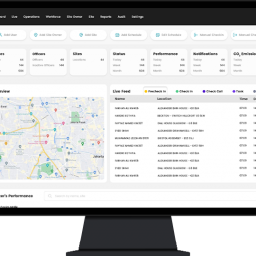In today’s competitive labor market, it is difficult to retain outstanding personnel. Despite strong labor demand, frontline firms continue to struggle to fill critical roles.
“When we try to measure what a tight labor market is, we traditionally look at the number of vacancies, the number of employees looking for work, and we divide that by the number of unemployed people. Traditionally, the ratio is below 1, which means that there’s more than one job per person that’s sort of looking. What we have seen recently is that number is way up around 2, and that seems really high,” says Jack Light, Labor Economics Ph.D. Candidate at the University of Chicago.
The pandemic also cleared the way for more remote employment, allowing people to explore new options. Yet, for businesses, this implies more competition for talent.
“There’s been a huge rise in remote roles. Suddenly you’re competing (for talent) not just in your local area, you’re competing with anyone in the US, for example,” explains Jack.
How can you maintain top talent and recruit new employees when there are more positions and a narrower talent pool? There are several methods for increasing employee retention; the difficult part is executing the one that makes the most sense for your firm and its personnel. Here’s how you decide which areas to priorities in order to prevent staff turnover and keep your top talent.
How to determine the best employee retention strategy
The first step is to determine what causes attrition. According to one survey, three out of every four employees who resigned might have been kept by their employer, and the majority of the reasons are avoidable, such as job characteristics, work environment, career growth, and work-life balance. These areas are largely under the leadership’s control, and they can swiftly enhance them by introducing reforms and employing the appropriate tools.
It’s common to believe that pay is the primary motivator for employees to stay with a firm. It is not always the case, though. What is significant to your team is not always as obvious as you believe. Apart from a strong wage and benefits package, the following areas might be as useful to employees.
- Fulfillment or finding purpose in a role
- Job satisfaction
- Workplace culture
- Relationships with bosses and colleagues
- Company values
- Processes such as onboarding
- Flexibility
If you learn what your employees value the most, you’ll be better positioned to make improvements and develop initiatives that will entice them to stay.
Effective employee retention strategies that work
While attempting to improve retention may be difficult, you don’t have to go in blind. Alternatively, you may examine precise data and KPIs to create specific procedures that make the most sense for your teams and are likely to lower turnover rates. Some may be applied right away, while others are better suited for long-term plans and strategies. Let’s have a look at some of them and how you may modify them to your specific needs.
Establish a feedback system
There are two sides to feedback that are vital to employee retention. The first is employer feedback on work performance. The second source of information is employee input on operations, policies, and coworkers.
Both are critical and should be gathered and handled as soon as possible.
Workers appreciate rapid and straightforward feedback. It assists employees in improving their job and demonstrates the importance of their contribution to the business.
Meanwhile, encouraging employees to submit feedback on the firm and their duties improves retention significantly. When workers feel comfortable sharing their perspectives on what works and what needs to be improved, you’ll have a treasure of ideas on how to retain your finest people.
It is critical to have a strong workplace culture that values input. It should also not end at getting employee feedback. The mechanism to act on them is also a crucial aspect of the equation.
Feedback frequency is also significant. Companies usually do it on a regular basis, such as quarterly, semi-annually, or yearly. While this gives some structure, more fluid and fast input is more beneficial. Furthermore, it does not necessarily have to take place in a formal environment. It may be done informally during brief catch-ups or using automated systems such as Vigilink.co.uk‘s Shift Feedback and Rating function.
Offer flexibility
Workers are more likely to stay with a company that provides flexibility. Nevertheless, before you think about creating policies, you should first grasp what flexibility implies for your staff.
People typically perceive flexibility as the ability to control their work arrangements. This includes the ability to work outside of the conventional office setting and defined hours, as well as attend to critical matters that would normally necessitate PTO or waiting until the weekend.
“An important thing to remember is that flexibility is often quite loosely defined. It’s much harder if you’ve got regular opening hours or you’re a retail store, and there are fixed tasks that need to be done and planned in advance,” explains Light. In such instance, how do you provide some level of freedom for hourly workers?
According to Light, offering some certainty is vital for hourly workers. This entails providing their schedules in advance so that they can plan their activities outside of work accordingly. Employees who receive their schedules a few of days before their shift are more likely to quit than those who receive their schedule at least 10 days in advance, according to studies.
Equip managers
People leave managers, not companies. This is a well-known expression when it comes to employee engagement and retention, and with good reason. According to Gallup data, it takes more than a 20% salary increase to entice employees away from managers who engage them, whereas it takes nearly nothing to entice disengaged employees.
Provide your managers the tools they need to properly engage their teams. One method to accomplish this is to relieve them of administrative and repetitive responsibilities. Using the appropriate technology can considerably assist managers in working smarter and spending less time on duties such as scheduling, time tracking, labor forecasting, and payroll. As a result, they place a greater emphasis on mentoring their people, understanding possible problems, and correcting them.
Create programs and perks that are valuable to your employees
Employee retention can be influenced by competitive incentives and bonuses. But, once again, knowing what types of benefits customers value is critical. Gaming rooms, free dinners, and company-sponsored gym memberships are all lovely advantages, but they aren’t necessarily compelling enough reasons for employees not to look for work elsewhere.
Learn about your staff in order to understand what is important to them. Remember that your employees are likely at various stages of their lives. Examining the demographics of your workforce is an excellent starting point for identifying which programs will have the greatest impact.
For example, how can you design retention programs for millennials, a generation noted for being disengaged at work? According to Gallup’s research, the majority of millennial workers value opportunities to learn and improve while looking for a job. If you want to keep or recruit this group, make sure they have plenty of opportunities to learn new skills, such as training programs, conferences, and other possibilities for growth.
Whether it’s additional time off benefits, family activities, upskilling, professional development opportunities, or employee recognition programs, make sure your benefits package includes items that make the most sense for your operations and where your employees are in their lives—both in terms of tenure and in general.
While determining this is not easy, you can always drill down on data and employee feedback to establish the exact types of programs that can be implemented within the firm.
Enrich your onboarding process
Convincing and attracting new employees is only half the game. The other half is ensuring that they stay. Employee onboarding sets the tone for a new hire, and you must make it count if you want to keep them. According to Gallup, 70% of employees who had great onboarding experiences think that they have “the best possible employment”.
Employee onboarding is a critical procedure in which firms must deliver on what they promised throughout the hiring process while also integrating new workers into the position and organization. Onboarding success does not happen overnight. It is a procedure that can extend up to the first year of employment for a new hire.
Here are some of the ways to make employee onboarding successful:
- Create a clear and simple onboarding roadmap first. Specify where you want your new hires to be at specified times, whether monthly, quarterly, or whatever works best for your company. Collect input on the process and continue to iterate your roadmap and programmes as you go.
- Include onboarding initiatives that allow employees to establish early rapport and healthy working connections with other team members. It is critical for new employees to feel included and a part of a team.
- Mentorship and training should be provided to new hires. When new employees get the tools they need to learn and carry out their responsibilities, they become more productive faster.
- Give clarity around objectives and goals. Employees, particularly new hires, become more productive when they understand their jobs, career routes, and how they directly contribute to the overall success of the firm.
- Use technology to manage onboarding files, track employee information, and expedite new hire paperwork. This frees up time for more important aspects of onboarding. Additionally, no new employee wants to cope with a mountain of paperwork and information overload on their first day of work.
Maximize the offboarding process to benchmark market trends
You must also pay attention to your offboarding procedure at the other end of the employee life cycle. While this is the stage at which an employee will leave the organization, it can still aid in your employee retention plan.
Yet, you must also guarantee that personnel departing the organization have a graceful exit. Therefore optimize exit interviews and use them to obtain feedback on what you can improve on and things that departing employees think will make existing staff stay. Take advantage of this opportunity to learn about their reasons for leaving. Is it career advancement, a higher income, or burnout?
You can, on the other hand, use the exit interview to learn about their new job and what other organizations are doing to recruit and keep personnel. Ask as to what prompted them to relocate. Is it a sizable sign-on bonus, more extensive learning and development, or business culture?
With this information, you can build benchmarks on how the market is, compare it to where you stand, and develop your programs and procedures accordingly.
Technology and employee retention
“What’s particularly exciting at the moment is that data is becoming increasingly available in real-time, as is the concept of continuous listening,” Albert remarks.
“Going from the type of survey done at defined times in time to more proactively determining when you need to step in and check in to see if everything is okay,” Albert adds.


















